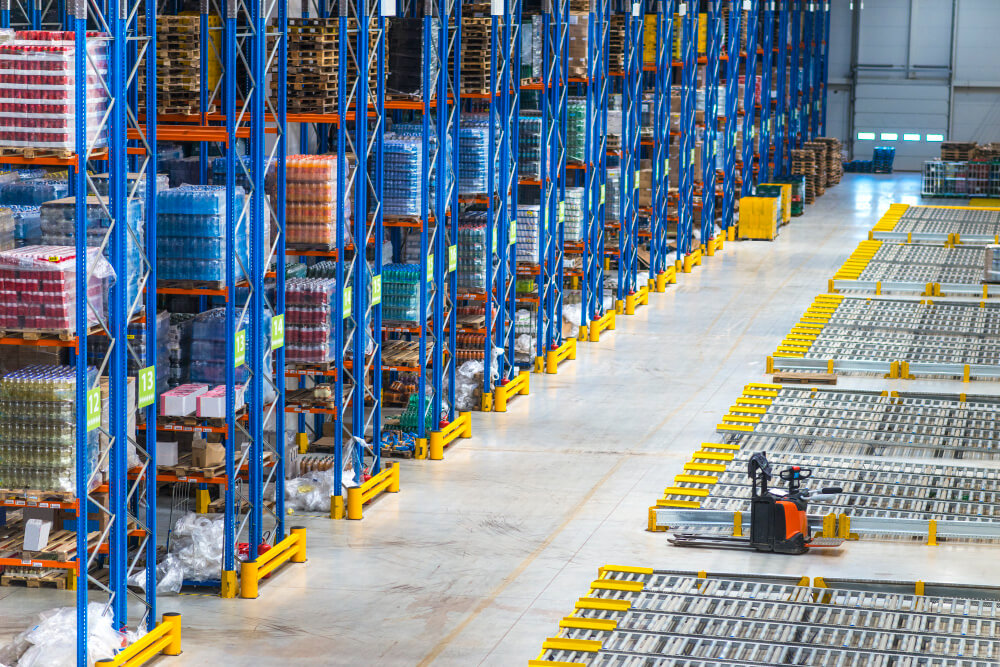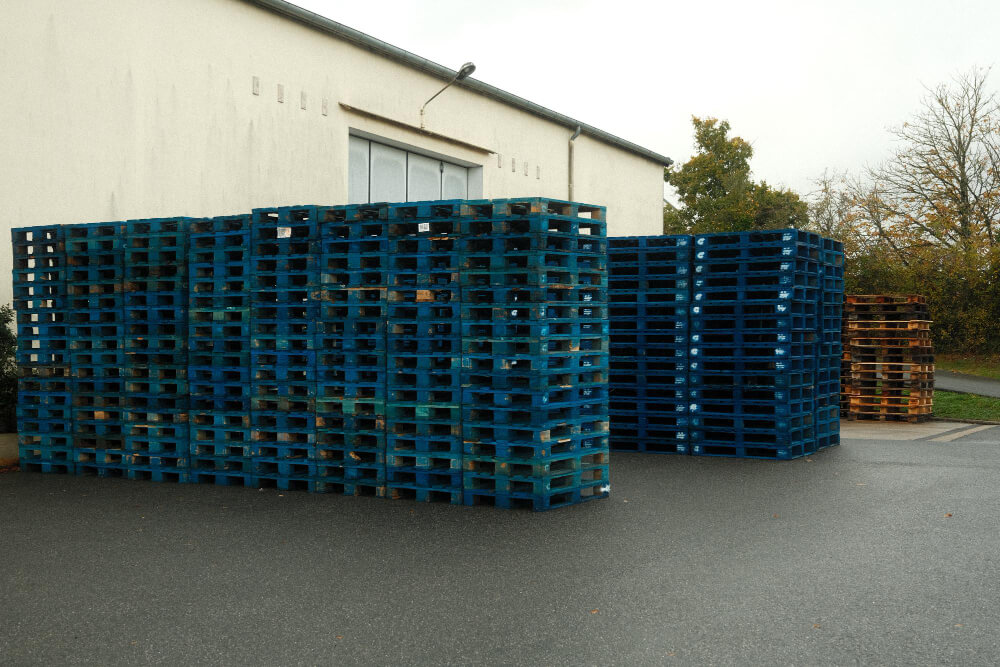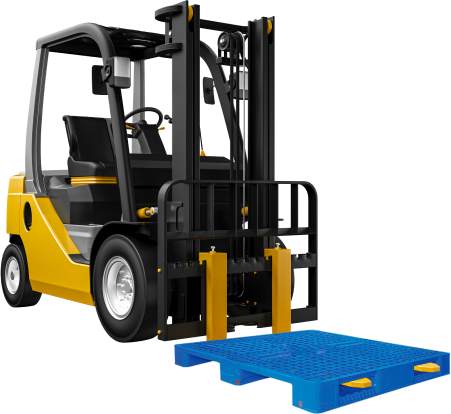Pallets are a very important component in the global supply chain. They are used to transport and store goods from one place to another, helping to maintain efficiency and smooth distribution of goods. In selecting pallets, one of the main considerations is whether to use plastic or wooden pallets. Both types of pallets have their advantages and disadvantages, and in this article, we will explore the comparison between plastic vs wooden pallets to determine which is better in various aspects.
Advantages and Disadvantages of Plastic vs Wood Pallets
1. Environmental Sustainability
One of the main issues in the debate regarding plastic vs wooden pallets is their impact on the environment. Wooden pallets come from natural raw materials, namely trees, which can be renewed. However, cutting down trees to make pallets can cause deforestation if not managed properly.
On the other hand, plastic pallets are usually made from recycled materials, such as used plastic, which can help reduce plastic waste. Therefore, in terms of environmental sustainability, plastic pallets are often considered better.
2. Prices and Fees
When considering plastic vs wood pallets, cost is an important factor. Plastic pallets are generally more expensive than wooden pallets to purchase initially.
However, plastic pallets have a longer service life and require less maintenance compared to wooden pallets. Wooden pallets can be susceptible to damage, especially if exposed to water or humidity.
They may also require repair or replacement more frequently than plastic pallets. Therefore, in the long run, investing in plastic pallets may be more cost-effective.
3. Strength and Capacity
Strength and carrying capacity are important factors in pallet selection. Wooden pallets are known to have good resistance to heavy loads and pressure.
They are often used to transport heavy items such as wood, metal, or industrial machinery. However, plastic pallets also have quite good durability and can handle heavy loads well.
The strength of both depends greatly on the design and construction of the pallet.
In addition, plastic pallets have advantages in terms of resistance to moisture and weather. Wooden pallets tend to absorb water and can rot or swell if exposed to prolonged moisture.
Plastic pallets, on the other hand, are unaffected by water and weather, making them a better choice for environments that are damp or at high risk of moisture.
4. Hygiene and Security
In applications that require high standards of cleanliness and safety, plastic pallets are often superior. They are easy to clean and do not absorb liquids or chemicals that could cause contamination.
Wooden pallets, if not properly maintained, can become a breeding ground for microorganisms or pests.
Plastic pallets also have advantages in terms of worker safety. They tend to be lighter than wooden pallets, making them easier to handle and lift.
In addition, plastic pallets generally have a more uniform design and are free from nails or wood chips that could injure workers.
5. Ease of Handling
Ease of handling is an important factor in logistics and warehousing operations. Plastic pallets are often easier to lift and move due to their lighter weight and flat surface.
They also don't need to be checked regularly to ensure there are no nails or wooden parts sticking out, which could interfere with the goods handling process.
Wooden pallets, meanwhile, may require additional maintenance such as painting or repair if they become damaged. This can add complexity to supply chain management.
Wooden pallets also tend to be heavier and less stable than their plastic counterparts, which can impact the efficiency and safety of operations.
6. Recycling Ability
Plastic pallets have advantages in terms of recyclability. They can be reused for longer than wooden pallets, and when they finally reach the end of their useful life, they can be recycled to make new plastic pallets.
This helps reduce plastic waste and supports the circular economy concept.
Wooden pallets can also be recycled, but the process is more complicated and often produces derivative products such as sawdust or fuel.
In addition, recycling wooden pallets often produces used wood that is not suitable for making new pallets.
Types of Pallets Suitable for Industry
In an industrial context, choosing the type of pallet is a very strategic decision because it can influence various aspects of the company's operations.
Here are some additional considerations regarding the types of pallets that are suitable for industry:
1. Regulatory Compliance
The industry is often subject to strict regulations regarding product hygiene and safety. Plastic pallets can more easily meet certain hygiene standards due to their smooth surface and ability to be cleaned easily.
Therefore, in the food, pharmaceutical or chemical industries, plastic pallets are often a more suitable choice to meet regulatory requirements.
2. Use in the Chemical and Pharmaceutical Industry
The chemical and pharmaceutical industries often use materials that are hazardous or sensitive to contamination.
Plastic pallets are more suitable for this application because they do not absorb liquids, which can avoid cross-contamination between different products.
Additionally, plastic pallets can be equipped with special features such as liquid drainage holes to address emergency situations involving hazardous material spills.
3. Applications in the Automotive Industry
The automotive industry often requires pallets that are strong and can withstand heavy loads, especially when transporting large components such as engines or unassembled vehicles.
In this case, a sturdier wooden pallet may be a more suitable choice due to its ability to handle heavy loads without being easily damaged.
4. Reliability in the Logistics and Distribution Industry
The logistics and distribution industry often faces challenges in terms of efficiency and productivity.
Plastic pallets with a lighter weight and flat surface can make it easier to lift and move goods in warehouses or distribution centers.
They also do not require repeated maintenance like wooden pallets, which can save time and operational costs.
5. Selection Based on Product Characteristics
The nature and characteristics of the product being transported must also be a primary consideration in pallet selection.
Products that require ventilation or air circulation, such as products that need to be kept cold, may be better suited to plastic pallets that have an open design.
On the other hand, wooden pallets may be more suitable for products that need to be stored in dry, protected conditions.
6. Stability and Stacking Reliability
Industries often rely on stacking to save storage space. In this case, plastic pallets with a consistent design and good strength in supporting stacks are a good choice. They can offer the stability needed to prevent stacks of items from toppling over.
Conclusion
In the comparison between plastic and wooden pallets, there is no one-size-fits-all answer. The decision depends on the specific needs and priorities of the company.
Plastic pallets tend to be more environmentally sustainable, more durable, and easier to maintain and handle. However, wooden pallets have good strength and carrying capacity and are still widely used in various applications.
It is important to consider a variety of factors, including long-term costs, worker safety, and environmental requirements, when choosing between plastic and wooden pallets.
Some companies even choose to use a combination of both according to their needs. By understanding the advantages and disadvantages of each type of pallet, companies can make the right decisions to keep their logistics operations running smoothly.








